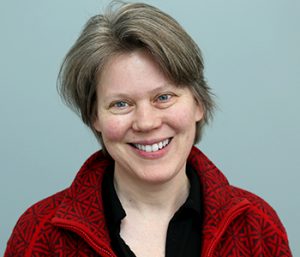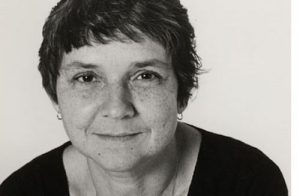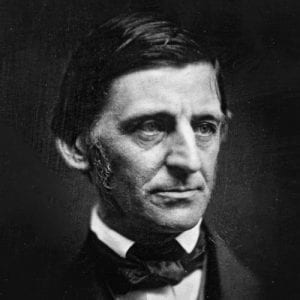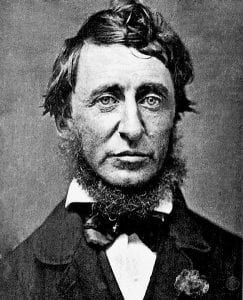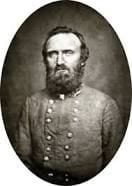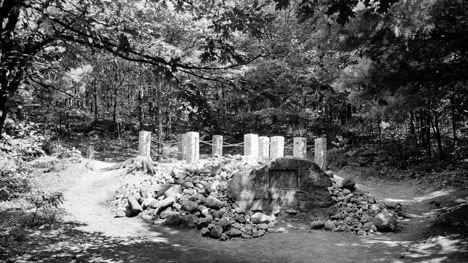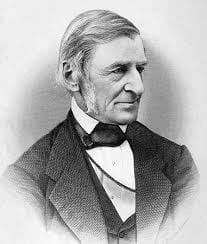 This week in 1862, the Springfield Republican printed a notice in “Foreign Affairs” about Giuseppe Garibaldi’s revolutionary bid to unify Italy, along with reports of wondrous finds from recent excavations of Pompeii, the city near Naples destroyed by the eruption of Mt. Vesuvius in 79 AD. From these reports, we take our theme of volcanoes, a revelatory image in Dickinson’s poetry (and one of our favorites!). She wrote several startling poems about volcanoes, Vesuvius in particular, and its explosive, destructive AND creative power. Volcanoes were also a potent symbol for Emerson, who, as we will see, used them as a figure for the poet and for the
This week in 1862, the Springfield Republican printed a notice in “Foreign Affairs” about Giuseppe Garibaldi’s revolutionary bid to unify Italy, along with reports of wondrous finds from recent excavations of Pompeii, the city near Naples destroyed by the eruption of Mt. Vesuvius in 79 AD. From these reports, we take our theme of volcanoes, a revelatory image in Dickinson’s poetry (and one of our favorites!). She wrote several startling poems about volcanoes, Vesuvius in particular, and its explosive, destructive AND creative power. Volcanoes were also a potent symbol for Emerson, who, as we will see, used them as a figure for the poet and for the
central fire … which animates all men.
Dickinson’s use of the image is much less romanticized, more violent, much more about what is under pressure and subterranean.

This focus also gives us the opportunity to reprise an exploration of Dickinson’s schooling in science and, in particular, her study of geology through the fascinating works of Edward Hitchcock, a Dickinson family friend and guiding light of the science curriculum at both Amherst Academy and Mount Holyoke Female Seminary, where Dickinson studied. Hitchcock has been described as
America’s leading advocate of catastrophe-based gap creationism,
in which his provocative theory of volcanoes played a role. To what extent was Dickinson responding, in her use of this potent symbol, to both of these powerful public men whose work she read and appropriated so subversively for her own purposes? Dickinson’s imaginative travel to places like Naples also expresses her fascination with geography, a subject that touches on issues of space and location we explored in last week’s post on “home” and “homelessness.”
“Matters are Now at the Worst”
Springfield Republican, September 6, 1862
Progress of the War, page 1
“We are again defending Washington behind its fortifications. The rebel armies hold their old line in Virginia, and the difference in the military situation between the present and the past is that larger armies have been massed on both sides, and that the rebels have assumed the offensive and put us on defense. We think matters are now at the worst; that they cannot cross the Potomac; and that our new levies hastening to the seat of war will soon turn the tide and drive back the insolent foe.”
Foreign Affairs, page 1
“The most interesting of the foreign news at present is the movement of Geribaldi in Italy, for the possession of Rome. The Turin government has expressed its disapproval of his course in the strongest terms, and there is danger of a collision between the partisans of the radical leader and the government of Victor Emanuel. Sicily is declared in a state of siege.”
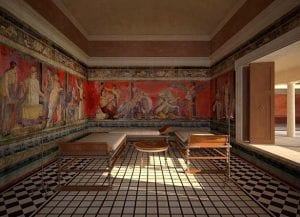
Books, Authors and Arts, page 6
“Recent excavations in Pompeii have brought to light a beautiful tridinium [triclinium: formal dining room in private Roman homes of the time containing three couches], with three richly decorated walls and three fine pictures [from the House of Siricus].
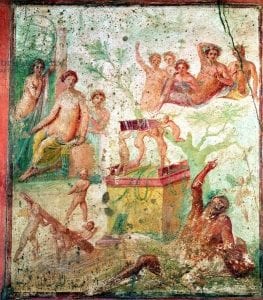
The first of these represents the building of Troy by Neptune and Apollo; the second, a drunken Hercules with numerous cupids, who have disarmed him, and surrounded by several Fauns and Bacchanal; and in the third picture Vulcan shows Thetis the arms of Achilles, among them a shield on which are represented the zodiac, Apollo and the nine muses.”
Hampshire Gazette, September 9, 1862
page 1
“From the three upper classes of Amherst nearly forty have entered the army since the close of summer term. The freshman class in Amherst College numbers fifty-four.”
Marrying Cousins, page 1
“Combining these results [conducted by Dr. Brochard] with those previously presented to the Academy [of Sciences in Paris] by Dr. Bourdin it appears that in marriages within the limits of consanguinity the births of deaf and dumb are in the proportion of 25 to 30 percent. A frightful warning this is to young ladies and gentlemen who have any regard for their posterity not to fall in love with their cousins.”
Atlantic Monthly, August 1862
Rifle Clubs, page 303
“A sense of the importance of rifle-practice is becoming very generally prevalent. Rifle-clubs are organizing on our country-towns, and target-practice by individuals is increasing to a degree which proves incontestably the interest which is felt in the subject. The chief obstacle to the immediate and extensive practical operation of this interest lies in the difficulty of procuring serviceable guns. We trust that our legislators will perceive the necessity of adopting a strict military organization of all the able-bodied men in the state, and providing them with weapons, with whose use they should be encouraged to make themselves familiar by the institution of public shooting-matches for prizes.”
“Vesuvius – dont talk”
Dickinson’s own education in geology and geography began early with coursework at Amherst Academy, whose curriculum in science was heavily influenced by Edward Hitchcock, a prominent figure in Amherst and an important voice in scientific debates of the day. Hitchcock was a friend of the Dickinson family, a working geologist, a minister who gave up his congregation to become professor of Chemistry and Natural History, then Geology at Amherst College, and finally served as the College’s President from 1845-1854.
In her study of geology, Dickinson used Hitchcock’s book, The Religion of Geology and Its Connected Sciences, a series of lectures the author introduced as aiming to develop “the relations between geology and religion” in order to counteract the many current attacks that argued for their incompatibility. Hitchcock declares at the outset:
I place geology first and most conspicuous on the list, because I know of no other branch of physical science so prolific in its religious applications.

The book appeared in 1851 adorned with a frontispiece of a beautiful hand-colored illustration, probably by his wife Orra White Hitchcock, who was herself a distinguished scientific illustrator, showing a “Section of the Earth’s Crust” with a volcano erupting off to the side.
As the title of Lecture VI describes, Hitchcock argues that volcanoes are key to the “Geological Proofs of the Divine Benevolence.” Well aware of the “awful sublimity” of volcanic eruptions, he offers an impassioned description of the eruption of Kilauea, “the most remarkable volcano on the globe.” From this, he explains that volcanoes are “safety valves” allowing for the escape of the “vast accumulations of heated and melted matter beneath the earth’s crust” that modern geology has documented. Although outwardly destructive, volcanoes, unlike earthquakes that do far more damage, are, in reality, “essential to the preservation of the globe.” Thus, he reasons, they are a means by which God shows his benevolence because
the evil is permitted that thereby greater good may be secured to the universe. … The desolation of this fair world by volcanic agency, and especially the destruction of life, do, indeed, teach us that this present system of nature is adapted to a state of probation and death, instead of a state of rewards and immortal life. … we have strong reason to believe they are essential to the preservation of the globe … If we can only rise to these higher views, and not suffer our judgement to be warped by the immediate terrors of the earthquake and the volcano, we shall see the smile of infinite benevolence where most men see only the wrath of an offended Deity.
Volcanoes held an important but more metaphorical meaning for Transcendentalist Ralph Waldo Emerson, who, in his famous lecture “The American Scholar,” declared:
The human mind … is one central fire, which flaming now out of the lips of Etna, lightens the capes of Sicily; and, now out of the throat of Vesuvius, illuminates the towers and vineyards of Naples. It is one light which beams out of a thousand stars. It is one soul which animates all men.
More pointedly, in his essay, “The Poet,” which we know Dickinson read, Emerson compared his Romantic vision of the poet as a “liberating god” standing out from ordinary humankind to “Chimborazo,” a stratovolcano in present-day Ecuador that begins in the equatorial jungle and rises up through all the climatic zones to be crowned with snow and glaciers more than 6,000 feet above sea level.
Kamilla Denman calls Emerson’s volcano an “image of benevolent spiritual enlightenment,” a description that also covers Hitchcock’s more doctrinally Christian view. They have appropriated their volcanoes, though admittedly sublime and awful, as images of compassion and generosity. By contrast, Dickinson’s volcanoes, Denman argues, are “a far more violent force, an image of devastating linguistic expression erupting out of silence,” and she quotes this astounding passage from the Third Master Document, which is dated sometime in 1862:
Vesuvius dont talk — Etna — dont — one of them — said a syllable — a thousand years ago, and Pompeii heard it, and hid forever — (L 233).
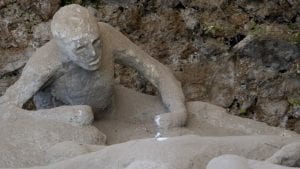 Arguing from a psychological perspective, Chloe Marnin finds that “volcanoes illustrate the repression, eruption, and aftermath of human emotion” in Dickinson’s poems, and points out that her particular interest in Vesuvius might have been kindled by the recent reports of excavations, like the one in this week’s Republican. Although it was early in this process, by 1860 Giuseppe Fiorelli took over directing the excavations at Pompeii and instituted new and better systems of recovery. By this time, much of the western part of Pompeii had been excavated. Fiorelli also began the process of pumping plaster into the cavities left by victims’ bodies to produce the uncanny casts of their struggles.
Arguing from a psychological perspective, Chloe Marnin finds that “volcanoes illustrate the repression, eruption, and aftermath of human emotion” in Dickinson’s poems, and points out that her particular interest in Vesuvius might have been kindled by the recent reports of excavations, like the one in this week’s Republican. Although it was early in this process, by 1860 Giuseppe Fiorelli took over directing the excavations at Pompeii and instituted new and better systems of recovery. By this time, much of the western part of Pompeii had been excavated. Fiorelli also began the process of pumping plaster into the cavities left by victims’ bodies to produce the uncanny casts of their struggles.

Dickinson also may have been aware of another popular entertainment that features volcanoes. In the 1840s, Mr. Spooner, a London-based printer, began making what he called “Spooner's Protean Views,” hand-painted 9" x 11" cards that showed one view but when held up to strong light or used with the early “magic lantern” device called the Polyrama Panoptique, completely changed the view. The views of Mt. Vesuvius were among the most dramatic and most popular.
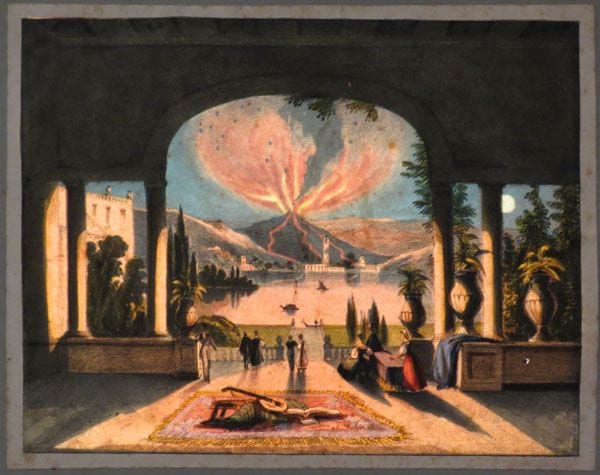
In her now-famous essay of 1976, poet Adrienne Rich performed an important re-vision of Dickinson, reimagining the “Belle of Amherst” not as a jilted lover but as “Vesuvius at Home”— that is, a woman of explosive, ungovernable powers, feeling herself possessed by a volatile daemon or demon. In the 19th century, Rich argued, such a woman who felt this way “has need of a mask, at least, of innocuousness and of containment.” One of these masks was the “reticent volcano,” and it expressed in her mind Dickinson’s extreme “ambivalence toward power.”
Some readers are now re-assessing Rich’s essay in contemporary terms, as Renée Bergland, our guest respondent for this week, describes in her reflection. Still, Rich's re-vision gave many of us permission NOT to read Dickinson in the limiting context of romance and men but in terms of her own powerful creativity. In the poems for this week, we will explore just how Dickinson re-purposed the volcano image used by two very prominent male thinkers in her world.
Reflection
Renée Bergland
In the trail of that genius my mind has been moving, and with its language and images my mind still has to reckon.
Adrienne Rich wrote these words about Emily Dickinson, but for me, they also describe Rich.
Rich’s essays are very moving to me. I love tracing out her emerging thinking across the decades—the change from her first steps away from an absolutist stance in “Poetry and Experience” (1964) to the feminist possibilities of “When We Dead Awaken: Writing as Revision” (1971) and “Vesuvius at Home: The Power of Emily Dickinson” (1976), and then, later, the more intersectional, anti-racist feminist awareness of “Notes toward a Politics of Location” (1984). Reading these essays as a Dickinson scholar, I see that Rich continued to reckon with Dickinson as her own poetics and politics changed and evolved.
I have been thinking about Adrienne Rich’s “Vesuvius at Home” quite a bit this year. I had the chance to talk it over with a group of Dickinsonians at the EDIS Summer gathering in Amherst in early August. Although the EDIS seminar discussion was the high point, I’d started gathering the materials in January, and I have continued to reflect on them since our meeting. One of the things that particularly interested me as I gathered the materials for the seminar was that there was surprisingly little crossover between Dickinson scholarship and Rich scholarship. Vivian Pollak’s wonderful book, Our Emily Dickinsons, published in 2016, describes “Vesuvius at Home” as “an essay which deeply influenced me and many of my friends” (13), but she only devotes a page or two to Rich, and she deftly rebuts Rich’s portrait of Dickinson as a proudly isolated volcano by citing “How happy is the little Stone” (F 1570), a poem that values “interdependency, complexity, and vulnerability” (14).
In our seminar discussion, we looked at a few recent essays about Rich, and tried to make connections to Dickinson’s poetry. We considered an essay by Miriam Marty Clark that traced Rich’s movement from identity to affiliation, another by Jeffrey Neilson that framed Rich in the context of postsecular feminism, and a third by Christian Haines that argued for an impersonal feminism, “gesturing toward a historical transformation that has rendered the borders between the personal/private and the impersonal/public extremely tenuous” (182). These scholars all describe Rich’s thinking in twenty-first century ways—as affiliative, postsecular, preindividual—that are hard to square with the way that “Vesuvius at Home” celebrates Dickinson as autonomous, secular, and individualist.
What I enjoy the most about Dickinson’s work is that it often brings together seemingly contradictory possibilities. I love thinking about the Dickinson whom Rich celebrates for being dangerous, aggressive, even destructive, alongside the affiliative, postsecular, preindividual version of Dickinson, who wrote about “Boundaries – forgot — ” in “The Spider holds a Silver Ball” (F 513), as well as volcanoes. When I read “On my volcano grows the grass” (F 1743), my reading is shaped by Rich’s description of the destructive power of the volcano, but it is also shaped by another idea—of the volcano as a place warm enough to melt the hardest little stones—a place more wondrous than destructive, more mysteriously, embracingly, passionately fluid than angry.
Dickinson’s volcano continues to “populate with awe my solitude” (as the last line of that poem would put it). A solitude populated with awe may not be solitary at all. To give Rich the last word, I’ll conclude with another line from “Vesuvius at Home:”
There are many more Emily Dickinsons than I have tried to call up here. Wherever you take hold of her, she proliferates.
Sources
Clark, Miriam Marty. “Human Rights and the Work of Lyric in Adrienne Rich.” The Cambridge Quarterly 38, 1 (2009) pp. 45-65.
Haines, Christian P. “The Impersonal is Political: Adrienne Rich's The Dream of a Common Language, Feminism, and the Art of Biopolitics.” Cultural Critique 96 (2017) pp. 178-215.
Neilson, Jeffrey. “‘No Poetry Will Serve’: The Cruel Optimism of Adrienne Rich’s Last Poems.” Genre 49, 3 (December 2016) pp. 331-357.
Bio: Renée Bergland is Hazel Dick Leonard Professor of English, Simmons College and Visiting Professor of English and Women's and Gender Studies, Dartmouth. Like every cultural critic worth her salt, I am curious about everything. My research and writing tend to focus on nineteenth-century America, but in every piece I push against national and historical boundaries, trying to find (or make) connections and to think outside of disciplinary boxes. My first three monographs may seem to be on wildly different subjects: Native Americans, Women in Science, and Emily Dickinson. But there is a methodology to my madness. All of my work tends to span broad expanses of time, to offer slightly startling juxtapositions, to rely on close readings of both literary and historical texts, and to explicitly advocate a dialogic ethics of analysis. I keep trying to connect the past to the present.
Sources:
Overview
Moore, Randy, Mark Decker and Sehoya Cotner. Chronology of the Evolution-creationism Controversy. Greenwood Press, 2010, 99.
History
Atlantic Monthly, August 1862
Hampshire Gazette, September 9, 1862
Springfield Republican, September 6, 1862
Biography
Andrew. “Spooner's Protean Views.” Magic Lantern World: Projected images from the 1640s to the present day. (Thanks to Renée Bergland for this source.)
Denman, Kamilla. “Emily Dickinson's Volcanic Punctuation.” The Emily Dickinson Journal 2, 1, Spring 1993: 22-46, 22.
Dobson, Joanne. Dickinson and the Strategies of Reticence: The Woman Writer in Nineteenth Century America. Bloomington: Indiana University Press, 1989, 107ff.
Emerson, Ralph Waldo. “The American Scholar.” Complete Works. RWE.org
Hitchcock, Edward. The Religion of Geology and Its Connected Sciences. Boston: Phillips, Sampson, and Company, 1854 1, 196-97, 204ff.
Marnin, Chloe. “The Imagery of Volcanoes in Emily Dickinson’s Poetry: The Psychology and Aftermath of Emotional Repression.” Medium. May 10, 2016.
Rich, Adrienne. “Vesuvius at Home.” originally in Parnassus: Poetry in Review. 5, 1, 1976.



